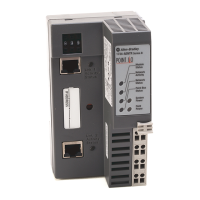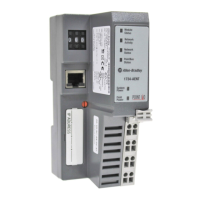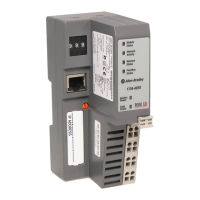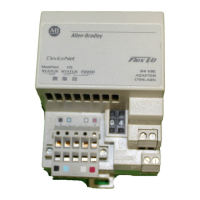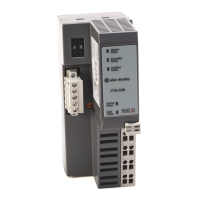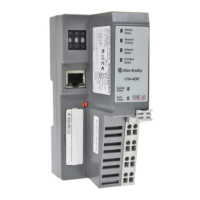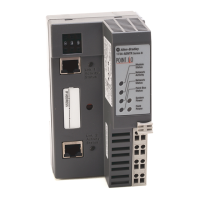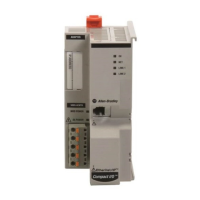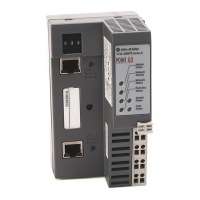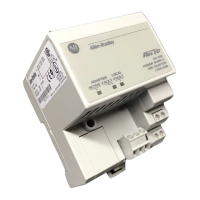104 Rockwell Automation Publication 750COM-UM009A-EN-P - May 2017
Chapter 5 Using Explicit Messaging
Formatting a Message to Read Multiple Parameters
Figure 24 - Scattered Read Message Configuration Dialog-boxes
The following table identifies the data that is required in each box to configure
a message to read multiple parameters.
Configuration Tab Example Value Description
Message Type
Service Type
(1)
Service Code
(1)
Class
Instance
Attribute
Source Element
Source Length
Destination
CIP Generic (network)
Custom
4d (hexadecimal)
93 or 9F (hexadecimal)
(3)
0 (Dec.)
0 (hexadecimal)
Scattered_Read_Request
(4)
40-bytes
(4)
Scattered_Read_Response
(5)
Used to access the DPI Parameter Object in the drive.
Required for scattered read messages.
Code for the requested service.
Class ID for the Class ID for the DPI Parameter Object or Host DPI Parameter Object.
Required for scattered read messages.
Required for scattered read messages.
The tag for the request service data.
Number of bytes of request service data.
The tag for the response service data.
Communication Tab Example Value Description
Path
(2)
My_PowerFlex_755T_Drive The path is the route that the message follows.
Tag Tab Example Value Description
Name Scattered_Read_Message The name for the message.
(1) The default setting for Service Type is ‘Custom’, which enables the entry of a Service Code not available from the Service Type pull-down menu. When choosing a Service
Type other than ‘Custom’ from the pull-down menu, the appropriate hexadecimal value is automatically assigned to the Service Code box, which is dimmed (unavailable).
When reading 32-bit REAL (floating point) parameters, as in this example, data conversion by using COP (copy) instructions or UDDTs is required to show the parameter
values.
(2) Click ‘Browse’ to find the path, or type in the name of the device listed in the I/O Configuration folder (for this example, My_PowerFlex_755T_Drive).
(3) See Table 8 on page 96
for limitations of PowerFlex 755T drives when using DPI Parameter Object Class code 0x93 or Host DPI Parameter Object Class code 0x9F for Explicit
Messaging.
(4) In this example, we are reading five 32-bit REAL (floating point) parameters. Each parameter being read requires two contiguous DINT registers. Therefore, a controller tag
was created with its Data Type field set to ‘DINT[10]’. Also, the Source Length field on the Message Configuration dialog box must correspond to the selected Data Type in
bytes (for this example, 40-bytes for a DINT[10] array). Scattered Read messages always assume that every parameter being read is a 32-bit parameter, regardless of its
actual size. Maximum message length is 256-bytes, which can read up to 32 parameters, regardless of their size. For parameter numbers, see DPI Parameter Object on
page 145 (Class code 0x93) or Host DPI Parameter Object on page 163 (Class code 0x9F).
(5) The controller tag for ‘Scattered_Read_Response’ must be the same size as the controller tag for ‘Scattered_Read_Request’. For this example, 40-bytes, but it can be
another data type (for this example, a UDDT to handle conversions to parameter values that are a REAL data type).
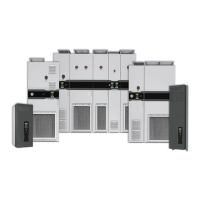
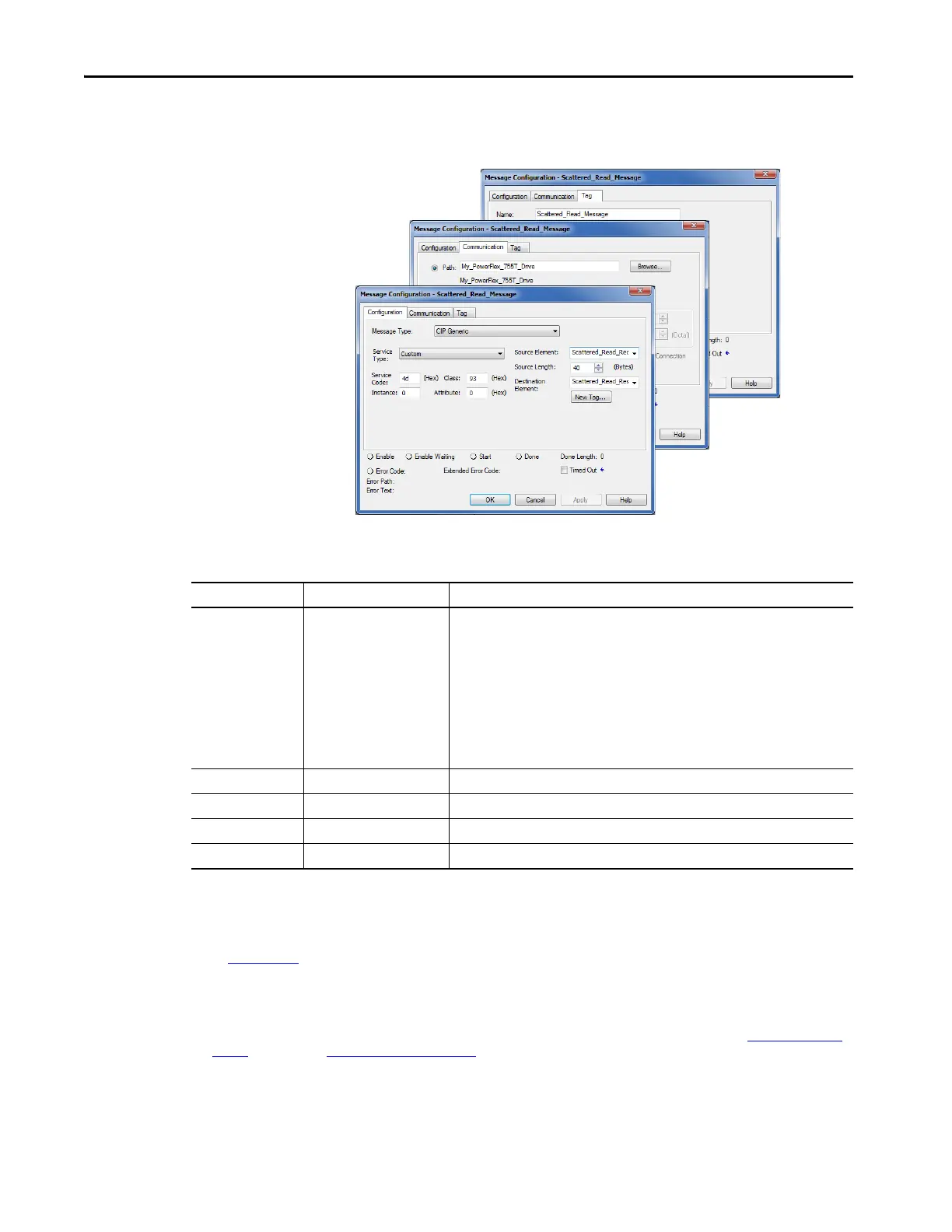